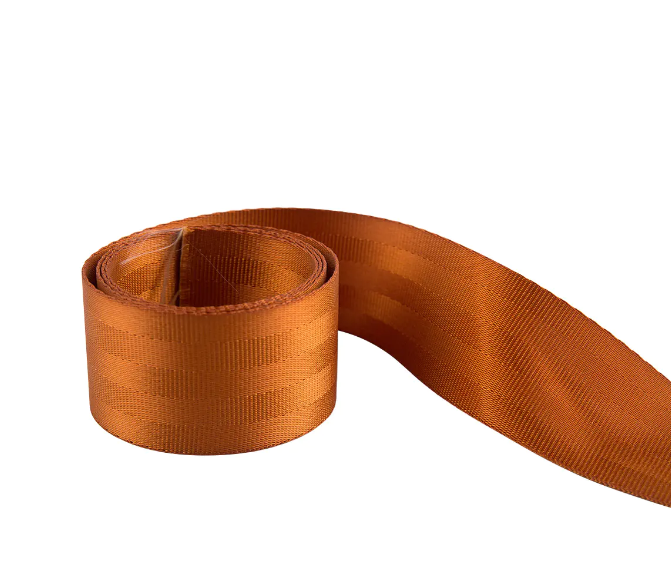Why Is the Quality of Car Seat Belt Webbing Crucial in Automotive Manufacturing?

Car seat belt webbing is one of the most important safety features in vehicles today. It plays a critical role in protecting passengers during an accident by restraining them and preventing movement that could lead to injury. The webbing used in car seat belts is specifically designed for strength, durability, and comfort, ensuring that it can withstand the forces exerted during a collision.
The primary material used for car seat belt webbing is polyester or a blend of polyester and other synthetic fibers. These materials are chosen for their high tensile strength, resistance to abrasion, and ability to maintain their structural integrity even under extreme conditions. This ensures that the car seat belt webbing can effectively secure passengers during sudden stops or impacts, preventing them from being thrown forward or sideways in their seats.
In addition to strength, car seat belt webbing must also be comfortable and flexible enough to allow for ease of use. The webbing is designed to be smooth and soft to the touch, reducing any discomfort to passengers when the seat belt is fastened. This balance between strength and comfort makes car seat belt webbing an essential component in automotive safety design.
When selecting car seat belt webbing, manufacturers must consider several factors, including the thickness and width of the webbing, as well as its resistance to UV light and environmental degradation. Exposure to sunlight, moisture, and extreme temperatures can cause the webbing to weaken over time. Therefore, car seat belt webbing is often treated with UV inhibitors and other protective coatings to prolong its life and ensure reliable performance.
Another important aspect of car seat belt webbing is its color. Webbing can come in a range of colors, but certain colors are used for specific purposes. For example, high-visibility colors like red or yellow may be used in emergency vehicles, while black or gray is more common in standard passenger vehicles. The color choice also plays a role in aesthetics and brand identity for vehicle manufacturers.
The process of manufacturing car seat belt webbing is highly precise. The webbing is woven into a specific pattern that enhances its strength and flexibility. Additionally, it undergoes various testing procedures, including tensile testing, to ensure that it can withstand the forces typically experienced during a crash. This rigorous testing is essential for ensuring that the webbing meets safety standards and regulations set by automotive safety organizations.
Car seat belt webbing is also part of the vehicle's overall restraint system, which includes other components such as the buckle, retractor, and anchor. These components work together to ensure that the seat belt functions effectively in securing passengers. A well-designed restraint system, with high-quality car seat belt webbing, can significantly reduce the risk of injury during an accident.
Manufacturers of car seat belt webbing are required to comply with various safety standards set by organizations such as the National Highway Traffic Safety Administration (NHTSA) in the United States and similar bodies in other countries. These standards ensure that the webbing is capable of withstanding the forces experienced in a crash while also being comfortable for the occupant.
Car seat belt webbing is a critical element in vehicle safety, designed to provide both strength and comfort while protecting passengers in the event of an accident. Its composition, durability, and performance are essential for creating a reliable restraint system that meets safety standards. The continued development and improvement of car seat belt webbing will play a key role in enhancing vehicle safety in the future.
- Art
- Causes
- Crafts
- Dance
- Drinks
- Film
- Fitness
- Food
- Jeux
- Gardening
- Health
- Domicile
- Literature
- Music
- Networking
- Autre
- Party
- Religion
- Shopping
- Sports
- Theater
- Wellness


